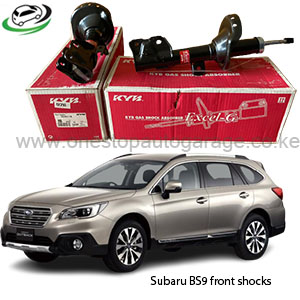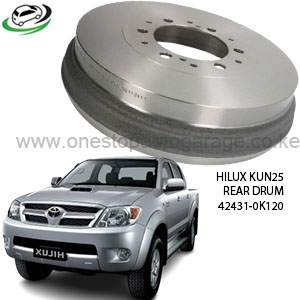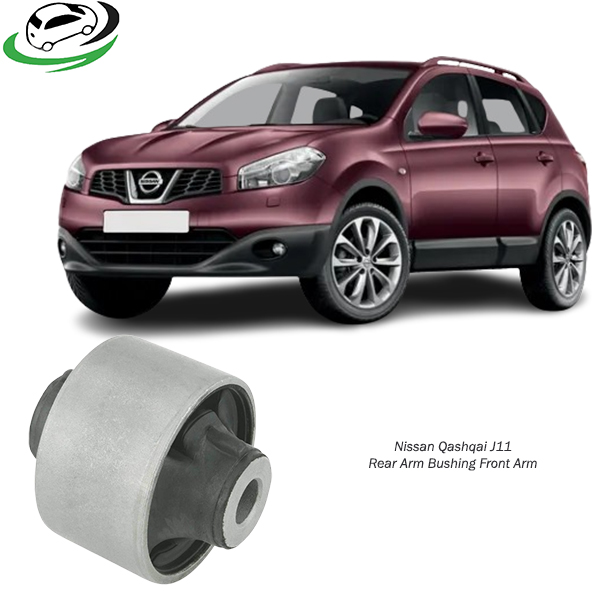-20%
Get Nissan Qashqai J11 Rear Arm Bushing Front Arm NAB-J11B in Kenya
The rear arm bushing, specifically located in the front arm of a vehicle’s suspension system, is a crucial part that enables smooth and controlled movement of the rear wheels. This bushing plays a vital role in stabilizing the rear suspension and ensuring proper alignment, all while absorbing road vibrations. A well-functioning rear arm bushing helps maintain control and comfort during driving, especially on uneven surfaces. In this guide, we’ll explore its structure, function, benefits, signs of wear, maintenance practices, and replacement procedures for the rear arm bushing in the front arm.
Structure and Composition of the Rear Arm Bushing (Front Arm)
The rear arm bushing in the front arm consists of three key parts:
- Outer Metal Shell:
- The outer shell is generally constructed from steel or a durable metal alloy, providing a secure housing for the inner components.
- Elastic Bushing Material:
- Most bushings are made from rubber or polyurethane. Rubber is flexible, provides excellent vibration dampening, and is commonly used in most vehicles. Polyurethane, on the other hand, offers better durability and longevity but results in a stiffer ride.
- Inner Metal Sleeve:
- The inner sleeve is where the bushing connects to the control arm through a bolt. It provides a strong yet flexible pivot point for the arm.
These components work together to secure the control arm while allowing controlled movement. The elastic material in the bushing reduces noise and vibration, while the metal parts maintain the structural integrity of the suspension setup.
Function of the Rear Arm Bushing (Front Arm)
The rear arm bushing in the front arm has several primary functions:
- Allowing Controlled Arm Movement:
- It provides a pivot point for the rear control arm, allowing it to move up and down with the wheels when encountering uneven road surfaces. This movement keeps the wheels properly aligned with the road, which is crucial for handling and stability.
- Absorbing Vibrations and Reducing Noise:
- By using flexible materials like rubber or polyurethane, the rear arm bushing dampens road vibrations and noise. This prevents them from reaching the cabin, enhancing the ride comfort for passengers.
- Ensuring Correct Suspension Alignment:
- The bushing holds the control arm in the correct alignment, ensuring the wheel maintains proper contact with the road surface. This alignment is crucial for maintaining handling characteristics and for preventing uneven tire wear.
- Protecting Other Suspension Components:
- The bushing minimizes direct metal-to-metal contact within the suspension, reducing wear on other components like the control arms and frame mounts. This protection helps prolong the life of the suspension system.
Benefits of High-Quality Rear Arm Bushings (Front Arm)
Using high-quality rear arm bushings offers significant benefits for vehicle handling, comfort, and safety:
- Enhanced Stability and Handling:
- Quality bushings stabilize the rear suspension and improve handling, especially on rough roads or during tight cornering. This stability translates to a safer and more predictable driving experience.
- Reduced Noise and Vibration:
- Premium bushings provide excellent vibration dampening, resulting in a quieter and smoother ride. They absorb shocks effectively, which improves passenger comfort.
- Increased Tire Longevity:
- Proper alignment and stable suspension geometry reduce uneven tire wear, which can be costly. High-quality bushings ensure that the wheels remain properly aligned, extending the life of the tires.
- Extended Suspension Component Life:
- By absorbing shocks and reducing the impact on suspension components, quality bushings help prolong the lifespan of parts like control arms, bolts, and frame mounts, which can be expensive to replace.
- Enhanced Ride Comfort:
- Properly functioning bushings contribute to a more comfortable ride by dampening vibrations and road harshness. This improvement is especially noticeable on long drives or rough terrain.
Signs of a Worn or Damaged Rear Arm Bushing (Front Arm)
Over time, the rear arm bushing in the front arm can wear down due to exposure to road conditions, load stress, and environmental factors. Here are common signs indicating that a bushing may be failing or worn:
- Clunking or Rattling Noises:
- When the bushing wears out, it allows the control arm to move excessively. This play in the suspension can create clunking or rattling noises, especially when driving over bumps.
- Increased Road Vibrations:
- A worn bushing loses its ability to absorb vibrations effectively, leading to more noticeable vibrations in the cabin, particularly when driving over rough surfaces.
- Poor Handling and Steering Response:
- As the bushing deteriorates, it impacts the alignment of the control arm, causing instability in handling and making the vehicle feel less responsive, especially during turns.
- Uneven or Accelerated Tire Wear:
- Damaged bushings can cause misalignment in the rear wheels, resulting in uneven tire wear. This wear pattern is typically seen as “cupping” or excessive wear on one edge of the tire.
- Visible Cracks or Wear on the Bushing:
- Upon inspection, a failing bushing may show cracks, tears, or excessive deformation. In rubber bushings, the material can become brittle and cracked, while polyurethane bushings may show signs of hardening or cracks.
Maintenance and Care of Rear Arm Bushings (Front Arm)
Proper maintenance of rear arm bushings can extend their life and ensure that they function effectively. Here are some key maintenance tips:
- Regular Inspection:
- Periodically inspect the bushings for any signs of visible wear, cracks, or deformation. Listen for unusual noises and check for loose suspension components.
- Lubrication (For Polyurethane Bushings):
- While rubber bushings don’t typically need lubrication, polyurethane bushings should be lubricated to reduce wear and prevent squeaking. Use a compatible grease specifically designed for suspension components.
- Alignment Checks:
- Regular alignment checks are crucial to ensure the wheels are properly aligned. Misalignment can cause unnecessary stress on bushings and other suspension parts, leading to premature wear.
- Avoid Excessive Loads:
- Overloading the vehicle puts added stress on the suspension, including the bushings. Adhere to the manufacturer’s recommended load limits to avoid accelerating wear.
- Protect from Road Chemicals:
- Salt, oil, and other chemicals on the road can damage rubber bushings. If driving in harsh winter conditions, consider washing the undercarriage regularly to remove salt and chemicals.
Replacing a Rear Arm Bushing (Front Arm)
When the rear arm bushing fails, replacement is usually the most effective solution. Here’s a step-by-step outline of the replacement process:
- Preparation and Safety:
- Safely lift the vehicle and secure it with jack stands. Make sure to work on a stable surface and wear safety gear.
- Remove the Rear Wheel:
- Taking off the rear wheel provides access to the suspension and control arm.
- Detach the Control Arm:
- Remove the bolts securing the control arm to the frame and other suspension components to access the bushing.
- Remove the Old Bushing:
- Using a hydraulic press or specialized bushing removal tool, press out the old bushing carefully, ensuring not to damage the control arm.
- Insert the New Bushing:
- Align the new bushing and press it into the control arm with a hydraulic press or installation tool. Make sure it’s seated correctly to prevent misalignment.
- Reattach the Control Arm:
- Reconnect the control arm to the frame and suspension, ensuring all bolts are torqued to the manufacturer’s specifications.
- Check Wheel Alignment:
- After replacing the bushing, have the alignment checked and adjusted if necessary. This step is essential to ensure optimal handling and tire wear.
Conclusion
The rear arm bushing in the front arm plays an essential role in the vehicle’s suspension system, providing stability, alignment, and comfort for the driver and passengers. High-quality bushings contribute to enhanced stability, reduced noise, extended tire life, and a smoother ride experience. Recognizing signs of wear and practicing regular maintenance can extend the life of the bushing and prevent costly repairs. Properly functioning rear arm bushings not only improve vehicle handling but also increase safety and comfort on the road. When replacement becomes necessary, following the correct procedure ensures a durable and reliable installation. Overall, maintaining rear arm bushings is a crucial part of vehicle care, enhancing performance and the driving experience.
Follow us on Facebook for more parts.



